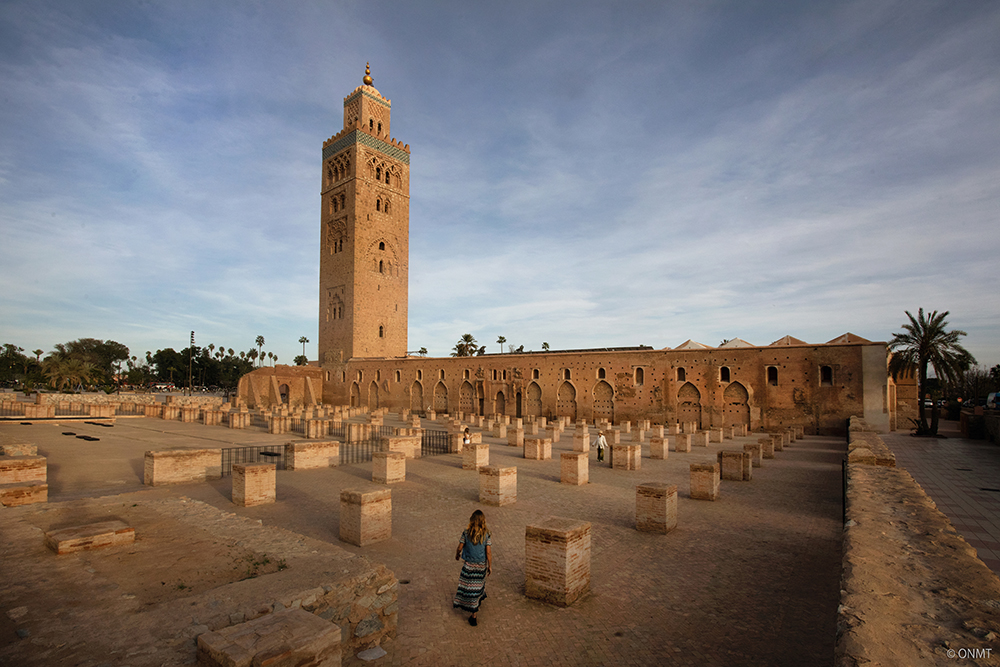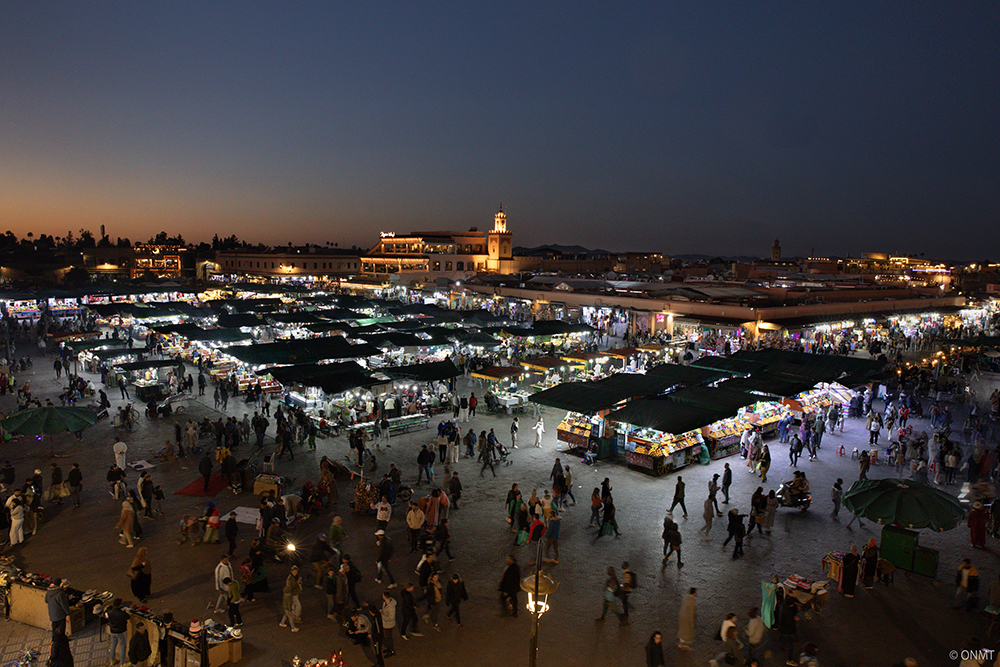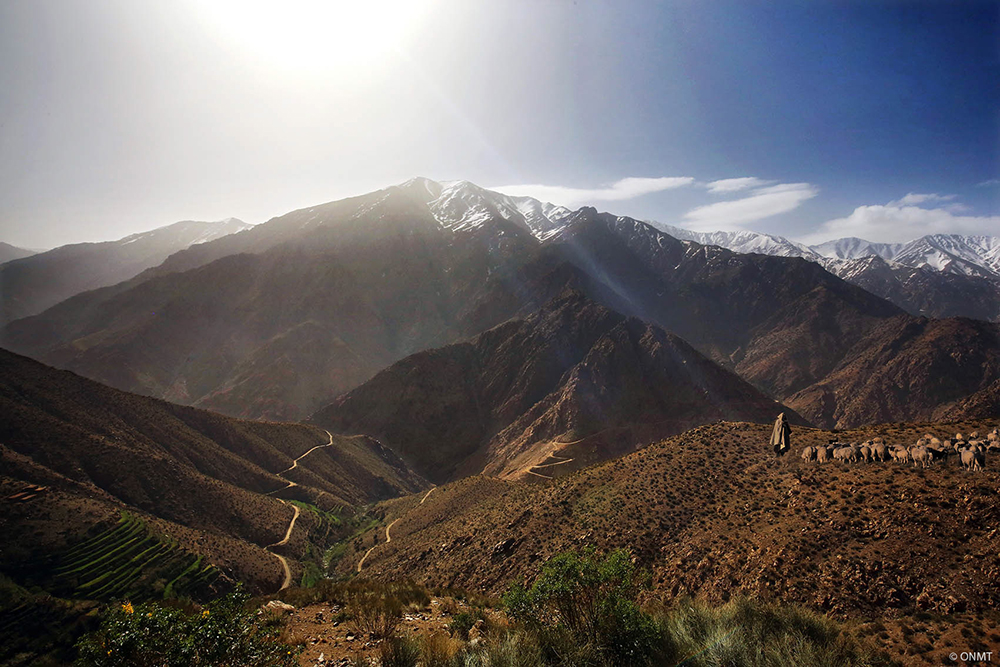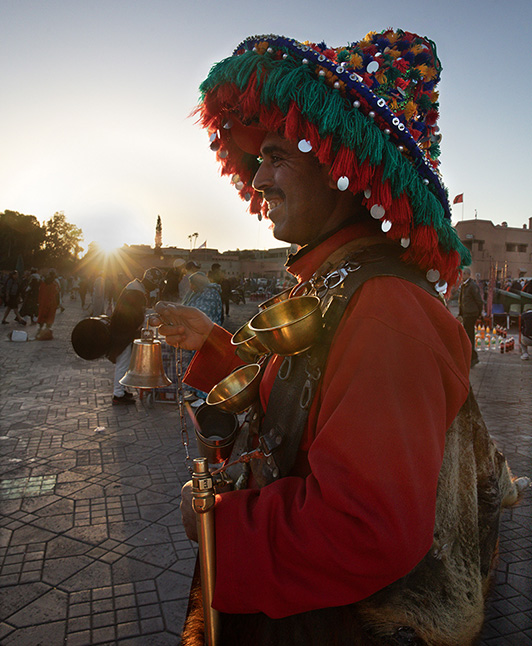Marrakech

Founded in the 11th century by Youssef Ibn Tachfin, the first king of the Almoravid dynasty, Marrakech was the capital of a vast empire stretching from Morocco to most of North Africa, including Andalusia.
Marrakech is one of the Kingdom of Morocco’s oldest cities, having played a crucial role in its history and identity. Indeed, for centuries it was a major center of political, economic and cultural influence, and today it shines globally as a popular tourist destination.

Marrakech, also known as the “red city” or the “ochre city” in reference to the color of many of its buildings and constructions, is world-renowned for its many tourist attractions, promising visitors incomparable sensations and excellent opportunities for an unforgettable change of scenery. Boasting an impressive cultural heritage with numerous monuments and museums, the city is divided into two distinct parts: the new town and the medina or historic town, which has been a UNESCO World Heritage Site since 1985.
Marrakech is also a very special city, vibrating all year round to the rhythm of countless national and international events of all kinds – artistic, cultural, sporting, economic and scientific – which bring together participants from the four corners of the globe.
Covering an area of 230 Km², Marrakech is located in south-central Morocco at an average altitude of 450 meters at the foot of the majestic “High Atlas” mountains. It is the fourth-largest city in Morocco, after Casablanca, Fez and Tangier, in terms of population, reaching 1,265,601 in 2024.

With its arid to semi-arid climate, Marrakech is characterized by hot, dry summers and cool, wet winters. In December, Marrakech enjoys around 7 hours of sunshine a day, with average temperatures ranging from 7°C to 20°C, but depending on the year, temperatures can dip below 0°C and even approach 28°C.
Since the 11th century, Marrakech has benefited from a hydraulic water supply system known as “khettaras” or underground drainage galleries. A system that bears witness to Moroccan ancestral ingenuity in efficient water management. For centuries, khettaras have marked the history of the Kingdom of Morocco in its arid regions, particularly in the Haouz plain of Marrakech. At the end of the 20th century, some 650 khettaras were still operating effectively on the outskirts of the Ochre city.

The progress and development of hydraulic techniques achieved under the Almohad reign (12th century) led to the creation of large reservoirs whose water was used to irrigate immense gardens and orchards, such as the Agdal or Menara gardens. Thus, despite its arid climate and thanks to the ancestral water and agricultural know-how of its inhabitants, Marrakech had become a splendid green oasis that never ceased to fascinate its visitors.
Currently, the ocher city is home to the “Mohammed VI Museum for the Civilization of Water in Morocco” dedicated to the history and culture of water in the Kingdom, and highlighting Moroccan ingenuity in the management of water resources, particularly through ancestral systems.
Find out more about the ocher city, through the official Visit Morocco website.



